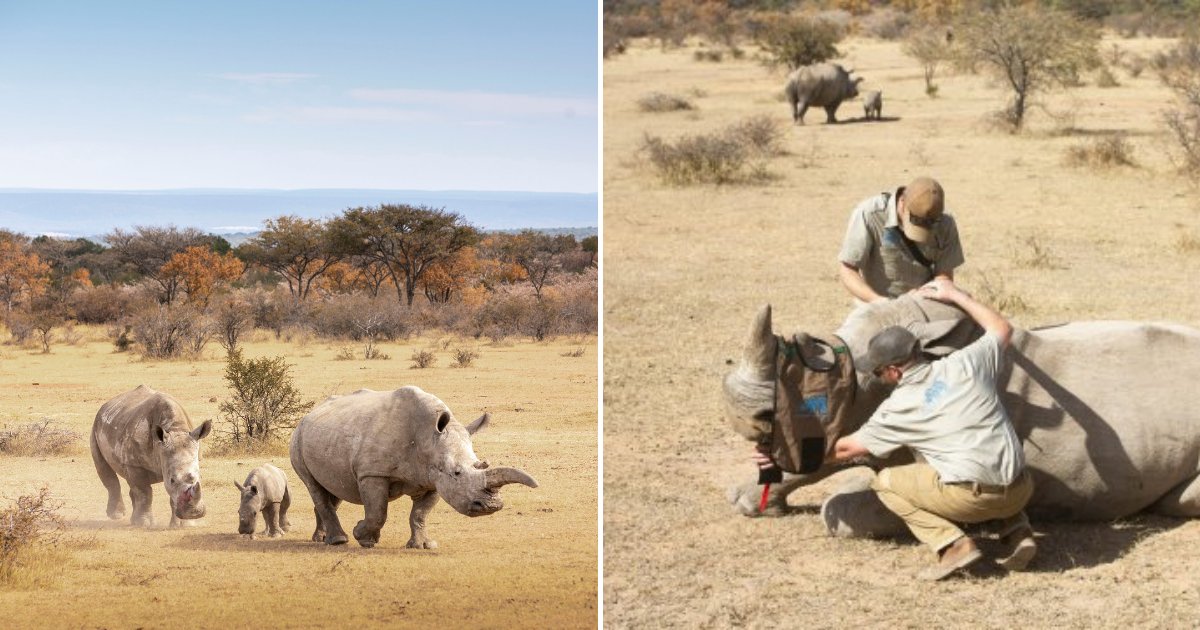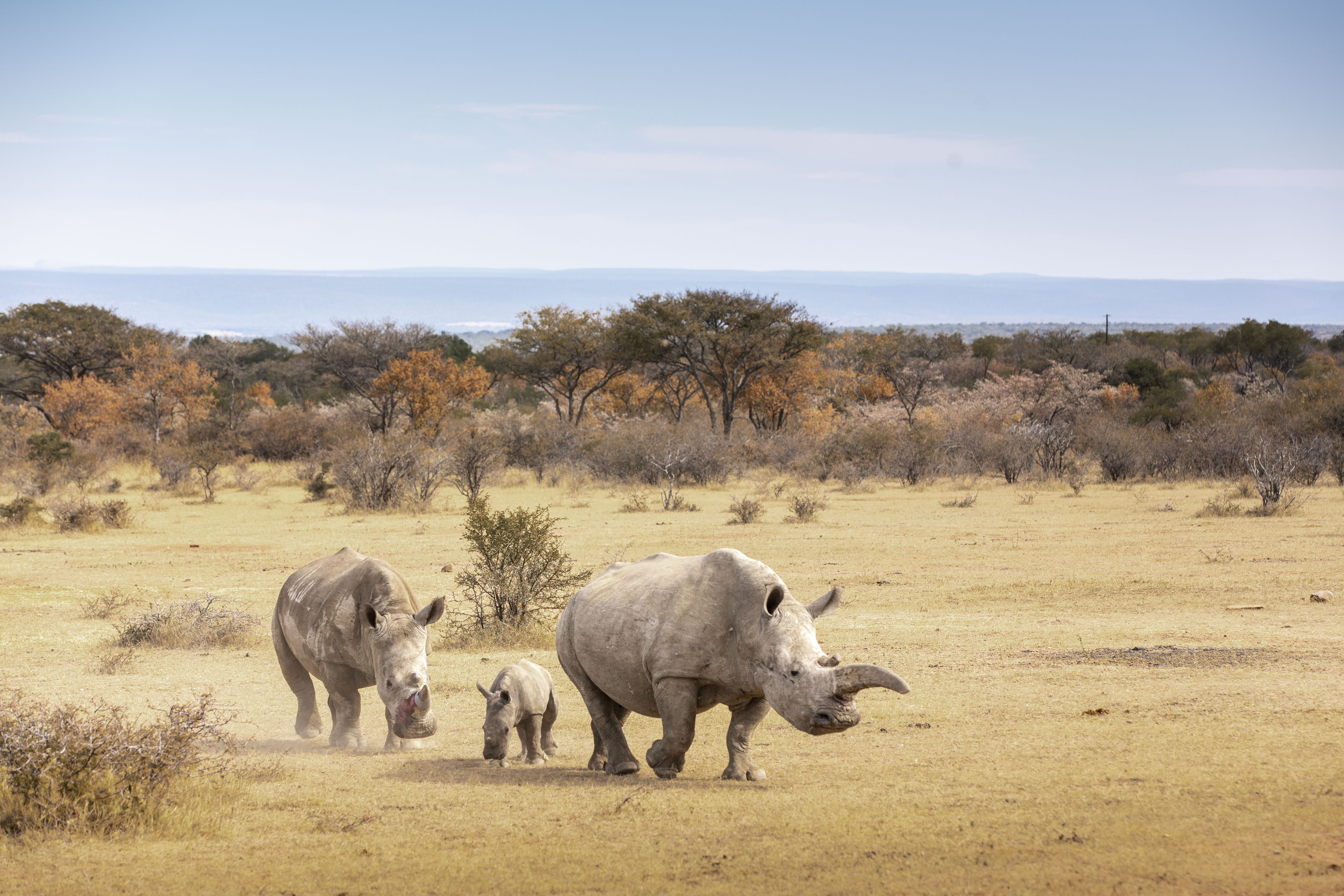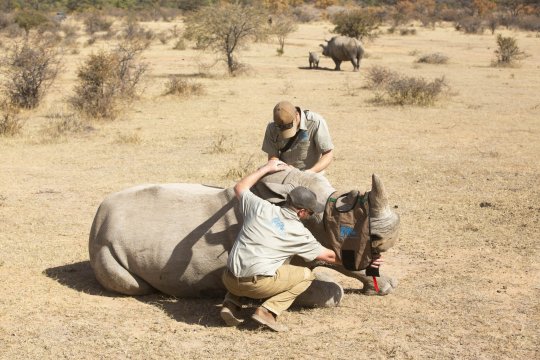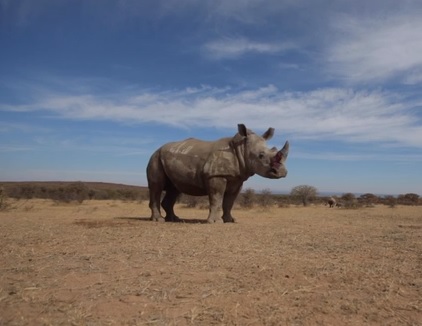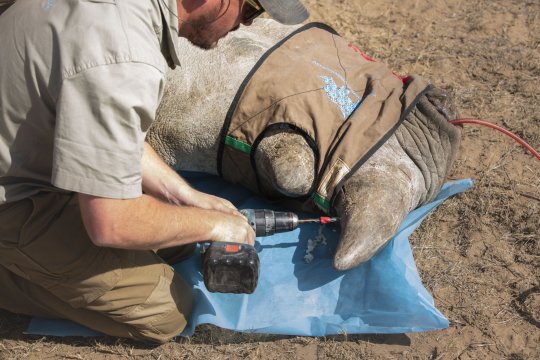Animal activists and rescuers have been praised after coming up with a method in which they deliberately poison the horns of rhinos in order to keep the poachers at bay.
According to the experts of the Rhino Rescue Project, they ‘poison’ the rhinos’ horns with ectoparasiticide, an animal-friendly toxin that has no adverse effects on animals but is dangerous to humans.
When a human gets close to the horn coated with the toxin, they might experience symptoms such as vomiting, nausea, and convulsions, leading the experts to believe this might be the solution to prevent poachers from targeting the giants for their horns.
In addition, the poison is mixed with a permanent dye that stains the horns and makes them less attractive and therefore worth less.
As the activists assured, however, the toxin and the color have no effects on the animals or their offspring in any way.
Documenting the path towards the preservation of rhinos, 28-year-old photographer Teagan Cunliffe shared photos showing the steps of the procedure performed by Rhino Rescue Centre.
“The treatment lasts between three to five years, a full horn growth cycle, thereafter it needs to be re-administered,” the South African explained.
“This costs $500 [R8000] for the entire operation, including ground crew and materials. My photographs show the process of the horn treatment by Rhino Rescue Project and The Ant Collection, from location and darting through to rhino, Mokolo’s recovery.”
According to the conservationists, the technique has been used for eight years and appears to be working as only 2% of the ‘poisoned’ and marked animals have died.
“My favorite capture is the drone image of the people involved in Mokolo’s treatment process,” Teagan added.
“I wanted the shadows of the humans to be the main feature: the faceless guardians of a vulnerable rhino. We are the only ones who can save this species from extinction.
“This is a hugely successful proactive anti-poaching effort, and I believe that all rhinos should undergo this treatment process.”
What are your thoughts on this conservation tactic? Let us know in the comments and don’t forget to SHARE this post with your friends and family!
Recommended Video!
“The Reason Why Elephants Poke Each Other’s Anus With Their Nose”


